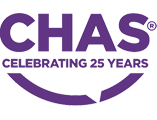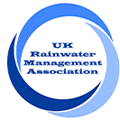A guide to Rainwater Harvesting and Greywater Recycling
05/05/2023
Water Reuse is the newest term on the sustainability agenda. Water Reuse involves managing water locally through Rainwater Harvesting or Greywater Recycling and is an important tool for developers to reduce unnecessary use of drinking water.
Recent estimates from the Environment Agency have found the UK will require an additional 4 billion litres of water per day by 2050. The buildings we are constructing today may still be standing by then, so we need to act now on achieving improved water efficiency standards if our built environment is going to withstand the challenges of water scarcity.
Although both Rainwater Harvesting and Greywater Recycling can provide a sustainable, non-potable water supply, they collect water runoff from different sources and use different filtration technologies.
The terminology between the two is often mixed up but it is important to be aware of the differences.

Unlike Rainwater Harvesting, Greywater Recycling relies on reclaimed water from showers and handwash basins to provide a non-potable water supply, instead of capturing rainwater from the roof. Reclaimed greywater requires different filtration processes to rainwater harvesting to ensure a safe supply.
During the treatment process, greywater is first channelled through a mesh to remove larger debris. Next, the greywater is oxygenated to provide a healthy environment for the biological treatment to take place, before passing through membrane filters to purify the greywater.
During routine maintenance, chemical dosing is recommended to remove biofilm from associated pipework and membranes. Greywater Recycling Systems which do not utilise chemical dosing for maintenance are prone to failure and have a shorter lifespan.
Recommended for hotels, apartments, student accommodation, offices, and leisure centres.

Rainwater Harvesting Systems capture stormwater runoff from the roof area of a building to provide a non-potable water supply. Unlike Greywater Recycling, Rainwater Harvesting requires less complex filtration as rainwater is generally clean and clear when it lands.
During filtration, rainwater is passed through a mesh filter to remove leaves and debris, before entering the main storage tank via an inlet calmer. Fine sediment settles on the base of the tank and, when water is demanded, a floating suction filter collects reused water from the cleanest part of the tank.
Finally, automatic backwashing is recommended as a final stage of filtration which reduces maintenance requirements for traditional cotton wound filters.
Recommended for hospitals, schools, universities, distribution centres, manufacturing sites, community housing developments and many more.
The two technologies are complimentary and can be combined to achieve maximum water efficiency or are ideal for water neutrality. Speak to our team of experts here for more.

My role as a Water Reuse Specialist means I get to keep up to date with all things water conservation. My favourite water saving tip is to turn taps off when brushing your teeth! I think rainwater harvesting and the water reuse industry is exciting, and I love sharing updates with our customers. View Matt’s Stormsaver profile here.
Terms & Privacy Policy Cookie Policy Site Map
Copyright © 2024 Stormsaver Ltd. All Rights Reserved.





